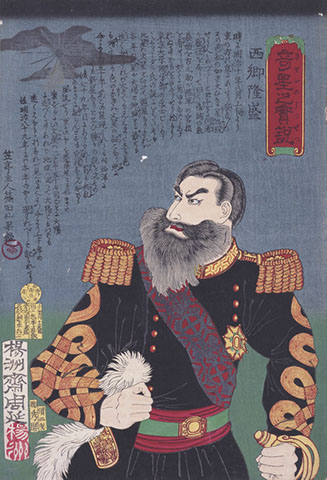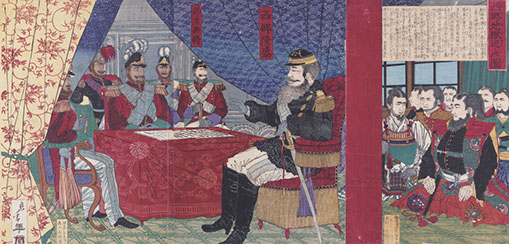Exhibitions
Goodbye Segodon: Ukiyo-e Depictions of the Satsuma Rebellion
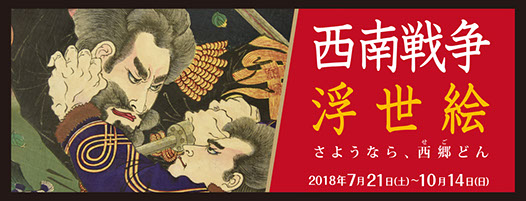
Proposal
From Saturday July 21, Umi-Mori Art Museum will be holding the special exhibition Goodbye Segodon: Ukiyo-e Depictions of the Satsuma Rebellion.
In 1877 (Meiji 10), samurai from the Satsuma Domain rose up against the government. This was the Satsuma Rebellion, Japan’s last civil war, and it was fought across modern-day Kumamoto, Oita, Miyazaki and Kagoshima. The rebels were ultimately defeated and their leader Saigo Takamori committed suicide at Shiroyama mountain in Kagoshima.
Satsuma Rebellion ukiyo-e are multi-colored woodblock prints depicting scenes of war. These realistic works gave everyday folk the chance to follow events taking place in far-off Kyushu. The artists mixed information obtained from newspaper articles with the occasional fabrication to create vivid scenes of war.
Many published works show the Satsuma army marching into battle or at the front. This testifies to the public fascination with the rebels at that time. Saigo Takamori was a particularly popular figure and he featured prominently in these prints. Demand remained strong even after the war’s end, as revealed by the brisk sales of woodblock prints depicting actors from Kabuki plays based on the Satsuma Rebellion, for instance. The war even featured in omocha-e toy prints used in children’s games such as sugoroku.
This exhibition showcases around 100 works selected from our museum’s collection of over 300 ukiyo-e prints based on the Satsuma Rebellion. These works were adored by folk back then. We hope you will enjoy them too.
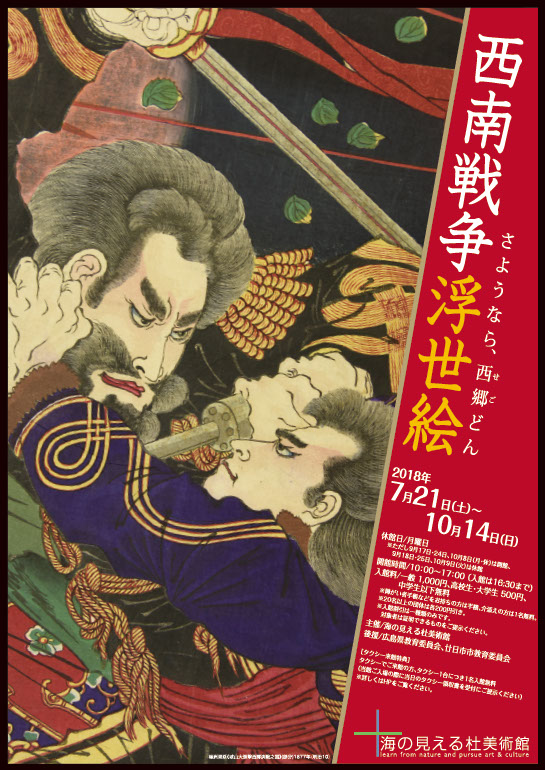
Plan Outline
Exhibition name: Goodbye Segodon: Ukiyo-e Depictions of the Satsuma Rebellion
Details: Ukiyo-e woodblock prints depicting the Satsuma Rebellion originally served as a kind of ‘dispatch from the front line’. Even after the war, they retained their popularity as woodblock prints depicting actors from Kabuki plays or as omocha-e toy prints enjoyed by children, for example. This exhibition takes a retrospective look at these prints using around 100 items selected from our museum’s collection.
No. of exhibits: Around 100
Venue: Umi-Mori Art Museum (701 Kamegaoka, Ohno, Hatsukaichi, Hiroshima)
With the support of: Hiroshima Board of Education and Hatsukaichi City Board of Education
Date: Saturday, July 21 to Sunday, October 14, 2018
Hours: 10:00–17:00 (Last entry: 16:30)
Closed: Mondays (however, the museum will be open on the Mondays of September 17, September 24 and October 8 and subsequently closed on the Tuesdays of September 18, September 25 and October 9)
Admission:
General admission: 1,000 yen
High school/university students: 500 yen
Junior high school students and younger: Free
Admission is half price for people with disability certificates, etc. One accompanying person is admitted free of charge.
*Groups of 20 or over will receive a discount of 200 yen per person
Inquiries: info@umam.jp (Umi-Mori Art Museum’s official email address)
Rooms 1 and 2 News reports from the frontline
The most common type of Satsuma Rebellion ukiyo-e prints were those that served as a kind of ‘dispatch from the front line.’ Using information garnered from newspapers, ukiyo-e artists would wield their powers of imagination to vividly recreate scenes of battle between the Satsuma army and the government forces, for instance, or scenes of battle formations. The ukiyo-e woodblock prints in Room 1 and 2 depict the passage of the Satsuma Rebellion from beginning to end. The rooms also feature multicolor nishiki-e portraits of leading figures from both the Satsuma and government sides.
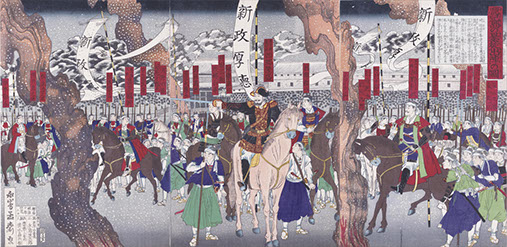
oshu Chikanobu: Saigo Takamori’s Last Stand at Shiroyama
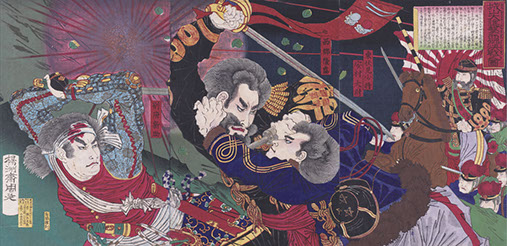
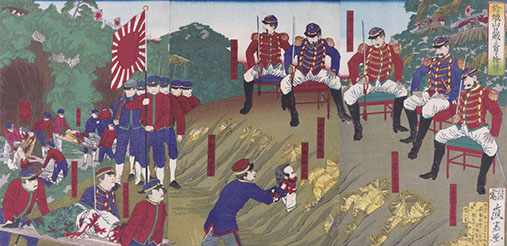
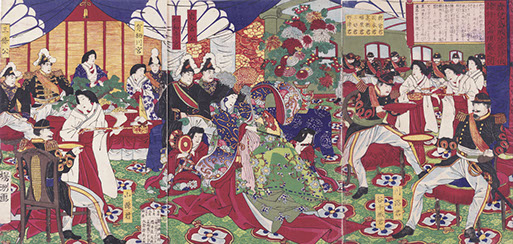
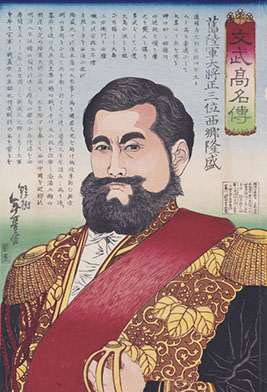
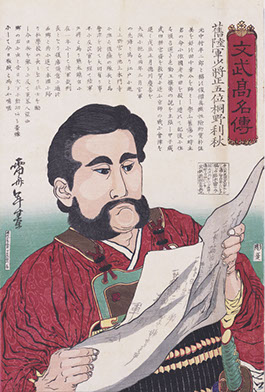
Room 3 The Women’s Army
These works depict female soldiers in battle. Rumors of a women’s army appeared in several contemporary newspapers, though the veracity of these reports are doubted. Nonetheless, the women’s army became a popular theme of ukiyo-e, with fantastical halberd-wielding female warriors often depicted leaping into battle against government forces. These flamboyant portrayals of women soldiers in richly-colored garments captured the hearts of the common folk at the time.
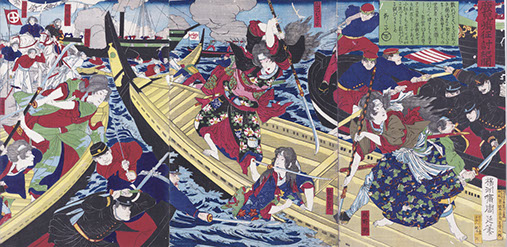
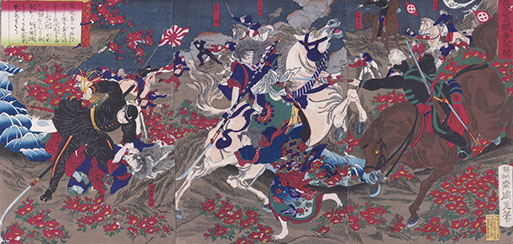
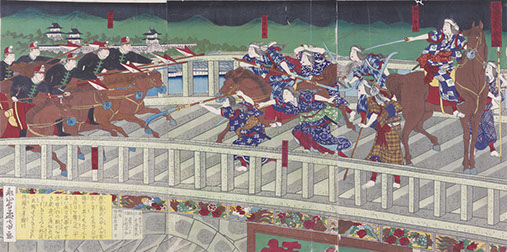
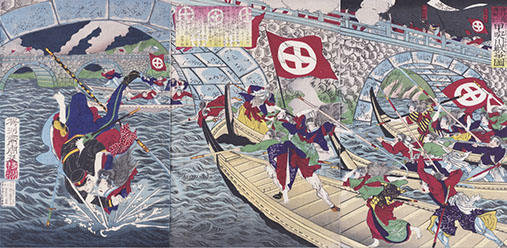
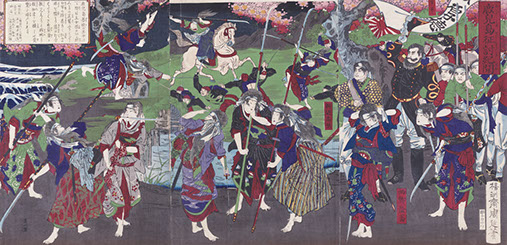
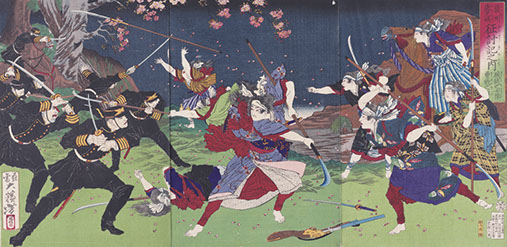
Room 4 Omocha-e Toy Prints
This room features children’s toy prints based on the Satsuma Rebellion. Toy prints were designed to be cut up and played with or used as learning tools. Many toy prints featuring the Satsuma Rebellion were produced a year after the war’s end, with the war’s impact also felt in the world of toys.
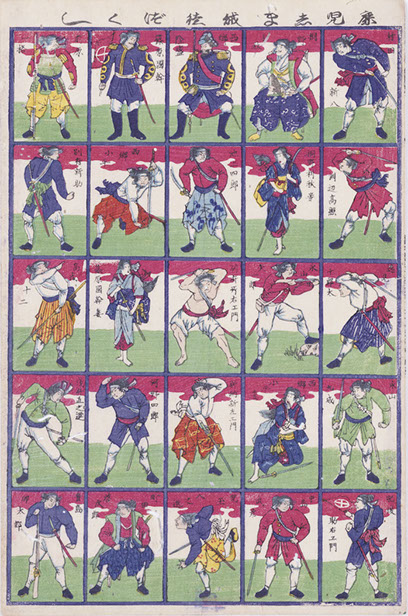
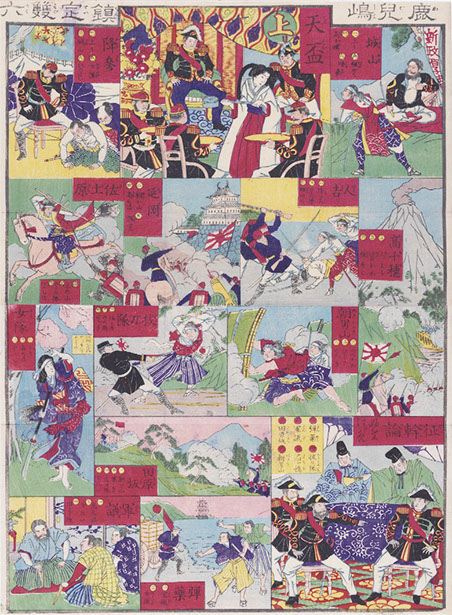
The Satsuma Rebellion and Kabuki Theater
These works feature actors who starred in Kabuki plays based on the Satsuma Rebellion. The first such play appeared in January 1878 (Meiji 11), three months after the war ended. Several other plays soon followed, including The Morning East Wind Clearing the Clouds of the Southwest, a smash hit by the dramatist Kawatake Mokuami that ran for over 80 days. These prints provide a glimpse into the vivid, highly-artistic world of kabuki actors.
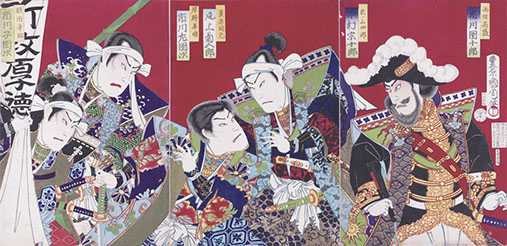
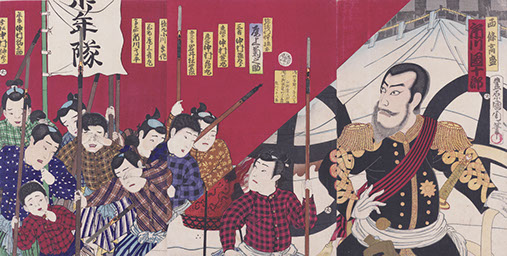
Room 4 Saigo Takamori and Ukiyo-e
These prints feature Saigo Takamori, the leader of the Satsuma Rebellion. The history of Japanese close-up portraits is filled with portrayals of Saigo Takamori, thus testifying to his popularity among contemporary folk. Some works depict the ‘Saigo Star’ (at that time, Mars was at its closest to earth and this led to rumors that Saigo Takamori was inside this new ‘star’), while other portray Saigo leaving his wife or visiting hell, for example. We hope you enjoy these varied ukiyo-e depictions of Saigo Takamori.
